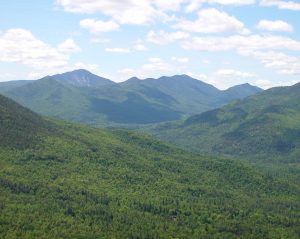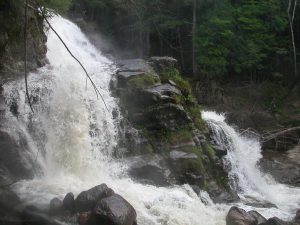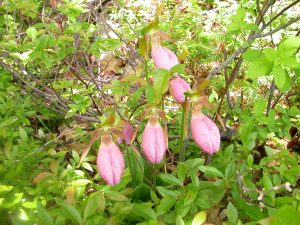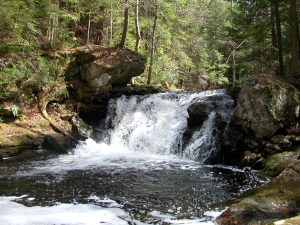Black Fly season is in full swing where I live, and I wanted to pen a tribute to these little monsters.

For those who don’t know what Black Flies are, they’re little bugs the size of a gnat that swarm in the early summer and BITE. Each bite swells up and itches. They hang around hikers in deciduous forests on long days when the weather is nice, getting in eyes, noses, and mouths. My first summer in the Adirondacks, I got a few dozen bites around my calves and ankles during a hike, and I was woozy for a couple days from the poisons. For the next ten years, a rash where I was bitten would reappear every time my legs got warm.
Female Black Flies bite mammals after mating to get a bit of blood for their eggs. They lay their eggs in cold moving water, and after the water reaches seventy degrees Fahrenheit, the eggs hatch. The larvae attach themselves to rocks and debris as they cannot swim. There are many larval stages. Eventually the larvae spin cocoons, and about a week later the young flies emerge. In my experience, it’s usually about a week after they begin swarming before they start biting. The life cycle repeats throughout the season, but the large swarms are usually gone by early July, depending on temperature and rainfall. As the weather grows warmer, the small streams harboring the larvae dry up. As the weather cools, larval development enters a stasis until the next spring.

Black Flies play an important role in the ecosystem at each stage in their development. Fish eat the eggs and the larvae. The larvae eat organic vegetable debris, breaking it down and filtering it for other organisms. Once the adults emerge, they become food for fish, birds, toads, bats, and other insects. The late spring swarms emerge at a particularly opportune time for nesting birds. Black Flies feed on plant nectar and are important for pollination.

While Black Flies make it unpleasant to be in the woods, they also creep into the villages, albeit in smaller numbers, and make it impossible to work in the garden (for me anyway). Most town districts use a pesticide to reduce the population of Black Flies. In early spring a chemical is released in streams that prevents Black Fly larvae from maturing. While this chemical is highly selective, affecting only one other (non-endangered) species, I don’t agree with this practice, since Black Flies are a critical foundation to the overall ecology. Fortunately Black Fly control is a daunting task in a place with as much water as the Adirondacks, and control efforts are always incomplete.

Bug repellants don’t work well against Black Flies. DEET supposedly works somewhat, but I wouldn’t know about that since I won’t use it. My strategies for hiking in Black Fly season are 1) to walk quickly and stay ahead of them, stopping only on open ledges where a breeze keeps them away; 2) to hike midday when there are fewer swarming; and 3) to wear long pants, pack a lightweight long-sleeve shirt, and bring a head net. A head net is a piece of nylon netting worn over a ballcap and cinched at the bottom. It interferes slightly with vision, but when the bugs are at their worst it’s worth the nuisance. I was once with a group on Nun-da-ga-o Ridge where the Black Flies were so bad we had to eat our sandwiches under our head nets.
Despite the consensus that Black Flies are a nuisance, many people respect these creatures for their fierceness and tenacity. A local softball team calls itself The Black Flies. A grueling mountain bike race calls itself The Black Fly Challenge. A local nursery calls itself Black Fly Organics. Many residents are proud of their ability to live with the Black Flies, viewing it as a badge of toughness.
Black flies are picky about where they lay their eggs, so the best thing about the early summer onslaught is what it tells us about the ecosystem we share with them: that water is plentiful and very very clean.
